The study of pharmacology can overwhelm even the most seasoned healthcare professionals, with nurses in particular. It can be daunting task to familiarize yourself with heaps and volumes of information concerning the medications available. It is the goal of these nursing mnemonics to provide an easy quick-guide to simplify the concepts of pharmacology.
1. Lidocaine Toxicity: “SAMS”
Lidocaine is a class IB antiarrhythmic used as a second-line agent and after myocardial infarction. The therapeutic drug range for lidocaine is 1.5-5.0 mcg/mL. While generally safe, lidocaine can be toxic if administered inappropriately, and in some cases may cause unintended reactions even when properly administered. Lidocaine toxicity is seen at levels greater than 5 mcg/mL. Remember the mnemonic SAMS for signs and symptoms of lidocaine toxicity.
- S: Slurred speech
- A: Altered central nervous system
- M: Muscle twitching
- S: Seizures
2. Medication Administration Checklist: “TRAMP”
Nurses are primarily involved in the administration of medication across various settings. They are primarily involved in both dispensing and preparation of medication. Research on medical administration errors (MAEs) shows an error rate of 60%, 34% mainly in the form of wrong time, wrong rate, or wrong dose. Before dispensing medication, ensure the correct TRAMP. See also the 10 rights of medication administration.
- T: Time
Check the order for when it would be given and when was the last time it was given. - R: Route
Check the order if it’s through oral, IV, SQ, IM, or etc. - A: Amount
Check the medication sheet and the doctor’s order before medicating. Be aware of the difference of an adult and a pediatric dose. - M: Medication
Check and verify if it’s the right name and form. Beware of look-alike and sound-alike medication names. - P: Patient
Ask the name of the client and check his/her ID band before giving the medication. Even if you know that patient’s name, you still need to ask just to verify.
3. Serious Complications of Oral Birth Control Pills: “SEA CASH”
Some women experience side effects with “the pill” such as irregular periods, nausea, headaches, or weight change. If she experiences the side effects with the acronym SEA CASH, calling the help of a medical provider or visiting an emergency room immediately is recommended as they may signify a serious condition.
- S: Severe leg pain
- E: Eye problems
- A: Abdominal pain
- C: Chest pain
- A: Acne
- S: Swelling of ankles and feet
- H: Headaches which are severe
4. Emergency Drugs to “LEAN” on
In the hospital setting, emergencies typically occur in emergency departments (EDs) and intensive care units (ICUs). The goal of using these common emergency drugs is to prevent the patient from deteriorating to an arrest situation.
- L: Lidocaine
ACTION: Suppresses automaticity of ventricular cells, decreasing diastolic depolarization and increasing ventricular fibrillation threshold. Produces local anesthesia by reducing sodium permeability of sensory nerves, which blocks impulse generation and conduction. USES: Ventricular arrhythmias, topical/local anesthetic - E: Epinephrine
ACTION: Stimulates alpha- and beta-adrenergic receptors, causing relaxation of cardiac and bronchial smooth muscle and dilation of skeletal muscles. USES: Bronchodilation; anaphylaxis; hypersensitivity reaction; Acute asthma attack; Chronic simple glaucoma - A: Atropine Sulfate
ACTION: Inhibits acetylcholine at parasympathetic neuroeffector junction of smooth muscle and cardiac muscle, blocking sinoatrial (SA) and atrioventricular (AV) nodes to increase impulse conduction and raise heart rate. USES: Decreases respiratory secretions, treats sinus bradycardia, reverses effects of anticholinesterase medication - N: Narcan
ACTION: Naloxone is used to treat an opioid emergency such as an overdose or a possible overdose of a narcotic medicine. USES: Opioid-induced toxicity; opioid-induced respiratory depression; used in neonates to counteract or treat effects from narcotics given to mother during labor
5. Drugs for Bradycardia & Hypotension: “IDEA”
Beta blockers reduce circulating catecholamine levels, decreasing both the heart rate and blood pressure. Typically, atropine is the drug of choice for symptomatic bradycardia. Antiarrhythmics and digoxin may also be used.
- I: Isoproterenol
Acts on beta2-adrenergic receptors, causing relaxation of bronchial smooth muscle; acts on beta1-adrenergic receptors in heart, causing positive inotropic and chronotropic effects and increasing cardiac output. Also lowers peripheral vascular resistance in skeletal muscle and inhibits antigen-induced histamine release. - D: Dopamine
Causes norepinephrine release (mainly on dopaminergic receptors), leading to vasodilation of renal and mesenteric arteries. Also exerts inotropic effects on heart, which increases the heart rate, blood flow, myocardial contractility, and stroke volume. - E: Epinephrine
Stimulates alpha- and beta-adrenergic receptors, causing relaxation of cardiac and bronchial smooth muscle and dilation of skeletal muscles. Also decreases aqueous humor production, increases aqueous outflow, and dilates pupils by contracting dilator muscle. - A: Atropine Sulfate
Acts on beta2-adrenergic receptors, causing relaxation of bronchial smooth muscle; acts on beta1-adrenergic receptors in heart, causing positive inotropic and chronotropic effects and increasing cardiac output. Also lowers peripheral vascular resistance in skeletal muscle and inhibits antigen-induced histamine release.
6. Thiazides Indications: “CHIC”
Thiazides affect the level of the nephron, inhibiting the reabsorption of sodium by the tubules at the cortical diluting segment of the nephron. The thiazides are the most commonly used oral diuretics and are widely used in the therapy of hypertension and congestive heart failure, as well as the treatment of edema due to local, renal and hepatic causes. Remember CHIC to thiazides indications!
- C: Congestive Heart Failure
- H: Hypertension
- I: Insipidus
- C: Calcium calculi
7. Parkinson’s Medications: “ALBM”
There are many medications available to treat the symptoms of Parkinson’s, although none yet that actually reverse the effects of the disease. Most Parkinson’s disease treatments aim to restore the proper balance of the neurotransmitters acetylcholine and dopamine by increasing dopamine levels. It is common for people with PD to take a variety of these medications. To familiarize yourself with the common drugs used for PD, remember the mnemonic: “Ali Loves Boxing Matches”. The former champion boxer Muhammad Ali was diagnosed with Parkinson’s in 1984 at the age of 42, and is one of the most high-profile people battling the condition.
- A: Amantadine
It improves muscle control and reduces stiffness in Parkinson’s disease; allows more normal movements of the body as the disease symptoms are reduced. Amantadine is also used to treat stiffness and shaking caused by certain medicines that are used to treat nervous, mental, and emotional conditions. - L: Levodopa
Levodopa is the drug most often prescribed. The body metabolizes it to produce dopamine. Giving dopamine directly is ineffective, because the brain’s natural defense blocks it from being used by the body. To suppress nausea and other possible side effects, levodopa is used in conjunction with a related drug called carbidopa. - B: Bromocriptine
It improves the ability to move and decrease shakiness (tremor), stiffness, slowed movement, and unsteadiness. It may also decrease the number of episodes of not being able to move (“on-off syndrome”). - M: MAO Inhibitors
MAO-B inhibitors also block the action of an enzyme that breaks down dopamine. They may be taken alone early in Parkinson’s disease or with other drugs as the disease progresses. MAO Inhibitors are often used alone because combining them with other drugs can cause unwanted side effects.
8. Morphine Side Effects: “MORPHINE”
Morphine interacts with opioid receptor sites, primarily in limbic system, thalamus, and spinal cord. This interaction alters neurotransmitter release, altering perception of and tolerance for pain. If side-effects occur, opioid rotation may be used for managing opioid-induced adverse effects.
- M: Myosis
- O: Out of it (sedation)
- R: Respiratory depression
- P: Pneumonia (aspiration)
- H: Hypotension
- I: Infrequency (constipation, urinary retention)
- N: Nausea
- E: Emesis
9. Atrial Arrhythmias: “ABCDE”
Atrial fibrillation is the most common sustained atrial arrhythmia. A variety of medicines are available to restore normal heart rhythm. A beta-blocker, such as bisoprolol or atenolol, or a calcium channel blocker, such as verapamil or diltiazem, will be prescribed. Digoxin may be added to help control the heart rate further. In some cases, amiodarone may be tried, or simply remember the mnemonic ABCDE.
- A: Anticoagulants
To prevent embolization. - B: Beta blockers
To block the effects of certain hormones on the heart to slow the heart rate. - C: Calcium Channel Blockers
Help slow the heart rate by blocking the number of electrical impulses that pass through the AV node into the lower heart chambers (ventricles). - D: Digoxin
Digoxin helps slow the heart rate by blocking the number of electrical impulses that pass through the AV node into the lower heart chambers (ventricles). - E: Electrocardioversion
A procedure in which electric currents are used to reset the heart’s rhythm back to regular pattern.
10. Ventricular Arrhythmias: “PALS”
Treatment for ventricular arrhythmias depends on the symptoms, and the type of heart disorder. Some people may not need treatment. If ventricular tachycardia becomes an emergency situation, it may require CPR and electrical defibrillation or cardioversion (electric shock). And to prevent the arrhythmia from recurring, anti-arrhythmic medications such as procainamide, amiodarone, lidocaine, or sotalol are given through a vein.
- P: Procainamide
Decreases myocardial excitability by inhibiting conduction velocity. Also depresses myocardial contractility. - A: Amiodarone
Prolongs duration and refractory period of action potential. Slows electrical conduction, electrical impulse generation from sinoatrial node, and conduction through accessory pathways. - L: Lidocaine
Suppresses automaticity of ventricular cells, decreasing diastolic depolarization and increasing ventricular fibrillation threshold. - S: Sotalol
Blocks stimulation of cardiac beta1-adrenergic and pulmonary, vascular, beta2-adrenergic receptor sites. This action reduces cardiac output and blood pressure, depresses sinus heart rate, and prolongs refractory period in atria and ventricles.
Recommended Resources
Our recommended nursing pharmacology resources and books:
Disclosure: Included below are affiliate links from Amazon at no additional cost from you. We may earn a small commission from your purchase which will help support us. Thank you! For more information, check out our privacy policy.
Pharm Phlash! Pharmacology Flash Cards #1 BEST SELLER!
Test-yourself review cards put critical clinical information for nearly 400 of the top generic medications at your fingertips. And, you can count on them for accuracy, because each card is based on content from Davis’s Drug Guide for Nurses. Increase your test scores in pharmacology class.
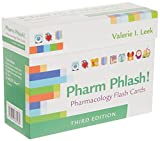
Focus on Pharmacology (8th Edition)
Focus on Nursing Pharmacology makes challenging concepts more approachable. Engaging learning features cultivate your clinical application, critical thinking and patient education capabilities. This updated 8th edition builds on your knowledge of physiology, chemistry and nursing fundamentals to help you conceptualize need-to-know information about each group of drugs.
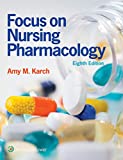
Pharmacology Made Incredibly Easy (Incredibly Easy! Series®)
Nursing pharmacology guide offers step-by-step guidance so you can grasp the fundamentals in enjoyable Incredibly Easy style. This is the perfect supplement to class materials, offering solid preparation for NCLEX® as well as a handy refresher for experienced nurses. Colorfully illustrated chapters offer clear, concise descriptions of crucial nursing pharmacology concepts and procedures.
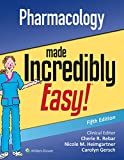
Lehne’s Pharmacology for Nursing Care (11th Edition)
The Eleventh Edition of Lehne’s Pharmacology for Nursing Care provides a thorough understanding of key drugs and their implications for nursing care. This text, written by renowned nursing educators, helps you comprehend and apply pharmacology principles. A clear and engaging writing style simplifies complex concepts, making even the most challenging pharmacology content enjoyable. We recommend this book if you want a comprehensive nursing pharmacology guide.
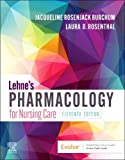
Nursing Drug Handbook
Nursing2023 Drug Handbook delivers evidence-based, nursing-focused drug monographs for nearly 3700 generic, brand-name, and combination drugs. With a tabbed, alphabetical organization and a “New Drugs” section, NDH2023 makes it easy to check drug facts on the spot.
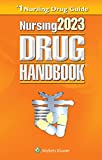
Pharmacology and the Nursing Process
The 10th edition of Pharmacology and the Nursing Process offers practical, user-friendly pharmacology information. The photo atlas contains over 100 unique illustrations and photographs depicting drug administration techniques. Updated drug content reflects the most recent FDA drug approvals, withdrawals, and therapeutic uses.
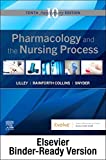
Mosby’s Pharmacology Memory NoteCards: Visual, Mnemonic, and Memory Aids for Nurses
The 6th edition of Mosby’s Pharmacology Memory NoteCards: Visual, Mnemonic, & Memory Aids for Nurses incorporates illustrations and humor to make studying easier and more enjoyable. This unique pharmacology review can be utilized as a spiral-bound notebook or as individual flashcards, making it ideal for mobile study.
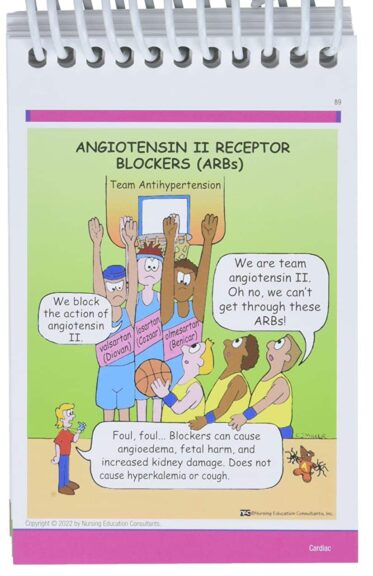
See Also
Here are other nursing pharmacology study guides:
- Nursing Pharmacology – Study Guide for Nurses
Our collection of topics related to nursing pharmacology - Pharmacology Nursing Mnemonics & Tips
These nursing mnemonics aim to simplify the concepts of pharmacology through the use of a simple, concise guide. - Generic Drug Name Stems Cheat Sheet
Learn about these generic drug name stems to help you make sense of drugs easier! - Common Drugs and Their Antidotes
A guide to drug antidotes that nurses should be familiar about. - IV Fluids and Solutions Guide & Cheat Sheet
Get to know the different types of intravenous solutions or IV fluids in this guide and cheat sheet. - Drug Dosage Calculations NCLEX Practice Questions (100+ Items)
Care to take the challenge? This quiz aims to help students and registered nurses alike grasp and master the concepts of medication calculation.
Drug Guides NEW!
Individual drug guides and nursing considerations for the most common medications used in nursing pharmacology:
- Acetaminophen (Tylenol)
- Aspirin
- Atorvastatin (Lipitor)
- Enoxaparin (Lovenox)
- Furosemide (Lasix)
- Gabapentin
- Hydromorphone (Dilaudid)
- Lisinopril
- Metoprolol
- Morphine
Gastrointestinal System Drugs
Respiratory System Drugs
- Antihistamines
- Bronchodilators and Antiasthmatics
- Decongestants
- Expectorants and Mucolytics
- Inhaled Steroids
- Lung Surfactants
Endocrine System Drugs
- Adrenocortical Agents
- Antidiabetic Agents
- Glucose-Elevating Agents
- Hypothalamic Agents
- Insulin
- Parathyroid Agents: Bisphosphonates, Calcitonins
- Pituitary Drugs
- Sulfonylureas
- Thyroid Agents
Autonomic Nervous System Drugs
- Adrenergic Agonists (Sympathomimetics)
- Adrenergic Antagonists (Sympatholytics)
- Anticholinergics (Parasympatholytics)
- Cholinergic Agonists (Parasympathomimetics)
Immune System Drugs
Chemotherapeutic Agents
- Anthelmintics
- Anti-Infective Drugs
- Antibiotics
- Antifungals
- Antineoplastic Agents
- Antiprotozoal Drugs
- Antiviral Drugs
Reproductive System Drugs
Nervous System Drugs
- Antidepressants
- Antiparkinsonism Drugs
- Antiseizure Drugs
- Anxiolytics and Hypnotic Drugs
- General and Local Anesthetics
- Muscle Relaxants
- Narcotics, Narcotic Agonists, and Antimigraine Agents
- Neuromuscular Junction Blocking Agents
- Psychotherapeutic Drugs
Cardiovascular System Drugs
Know a few witty nursing mnemonics? If you some mnemonics about this topic, please do share them at our comments section below! Else, there are more nursing mnemonics here.
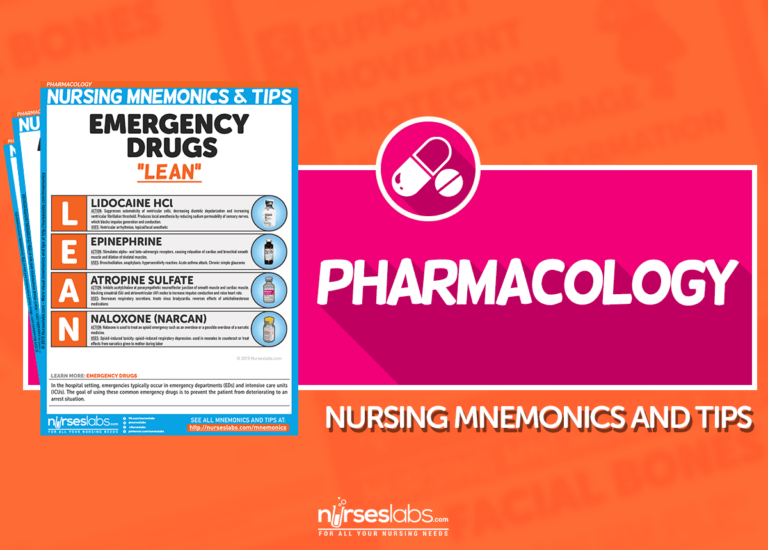

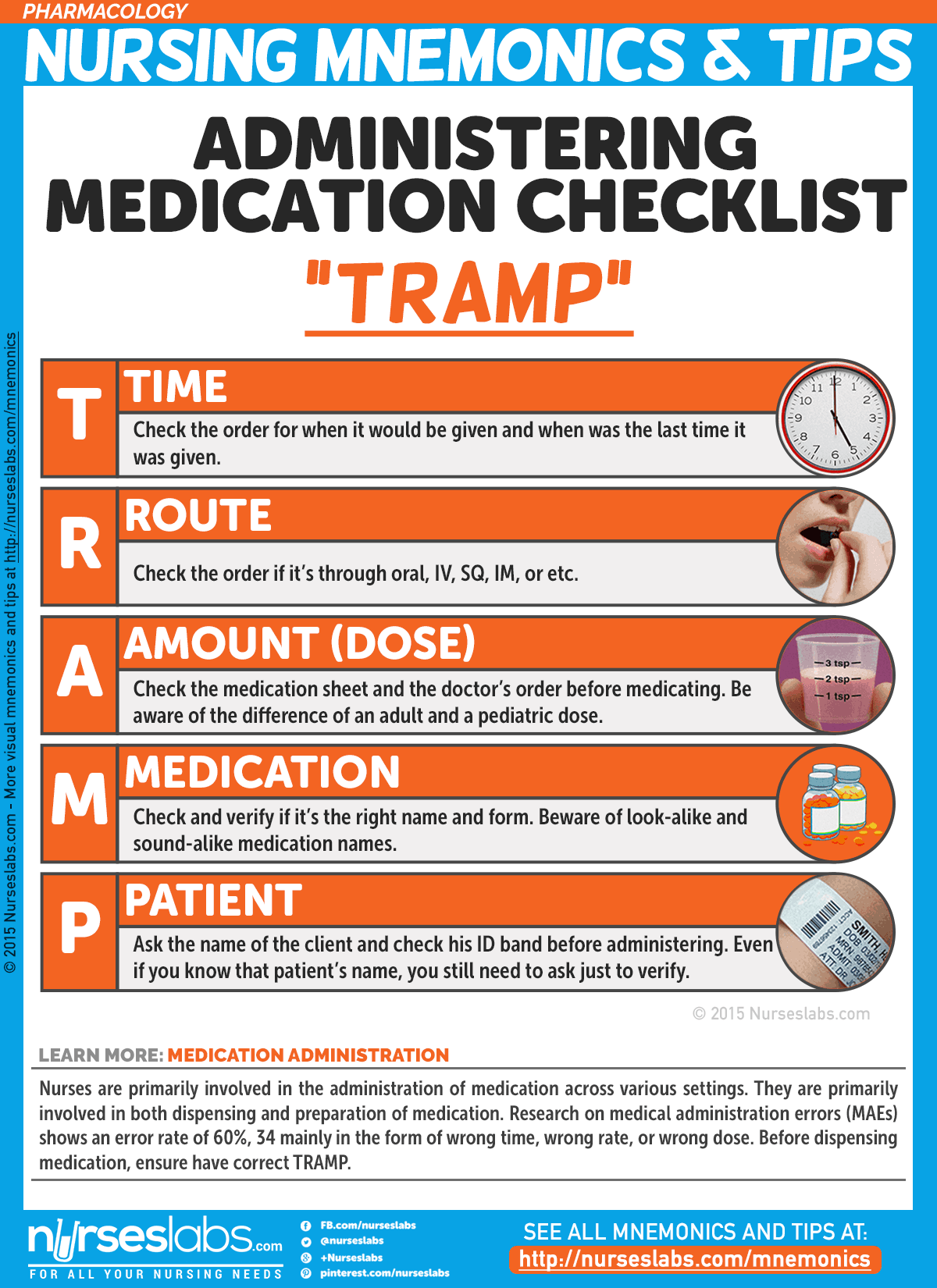
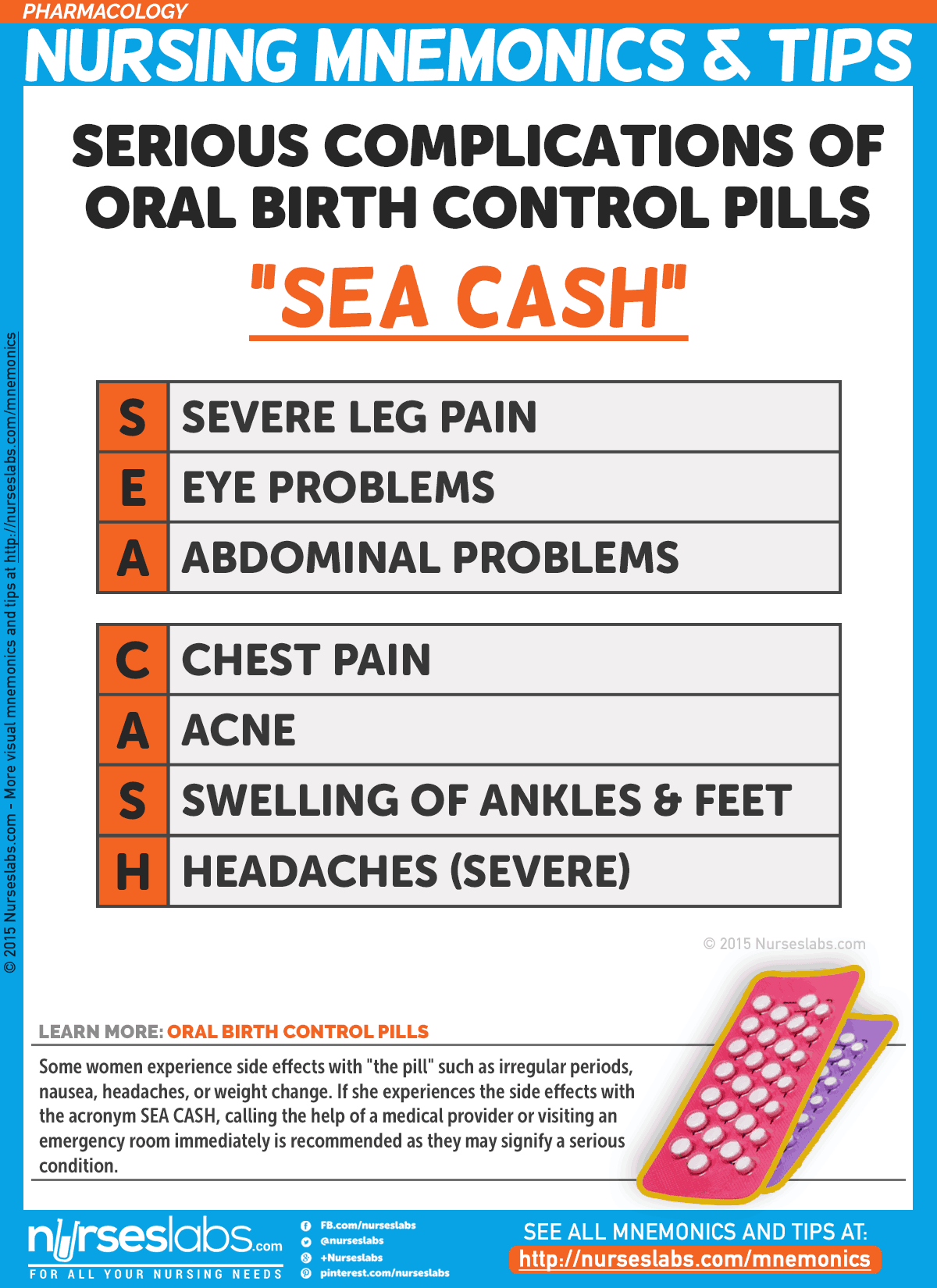

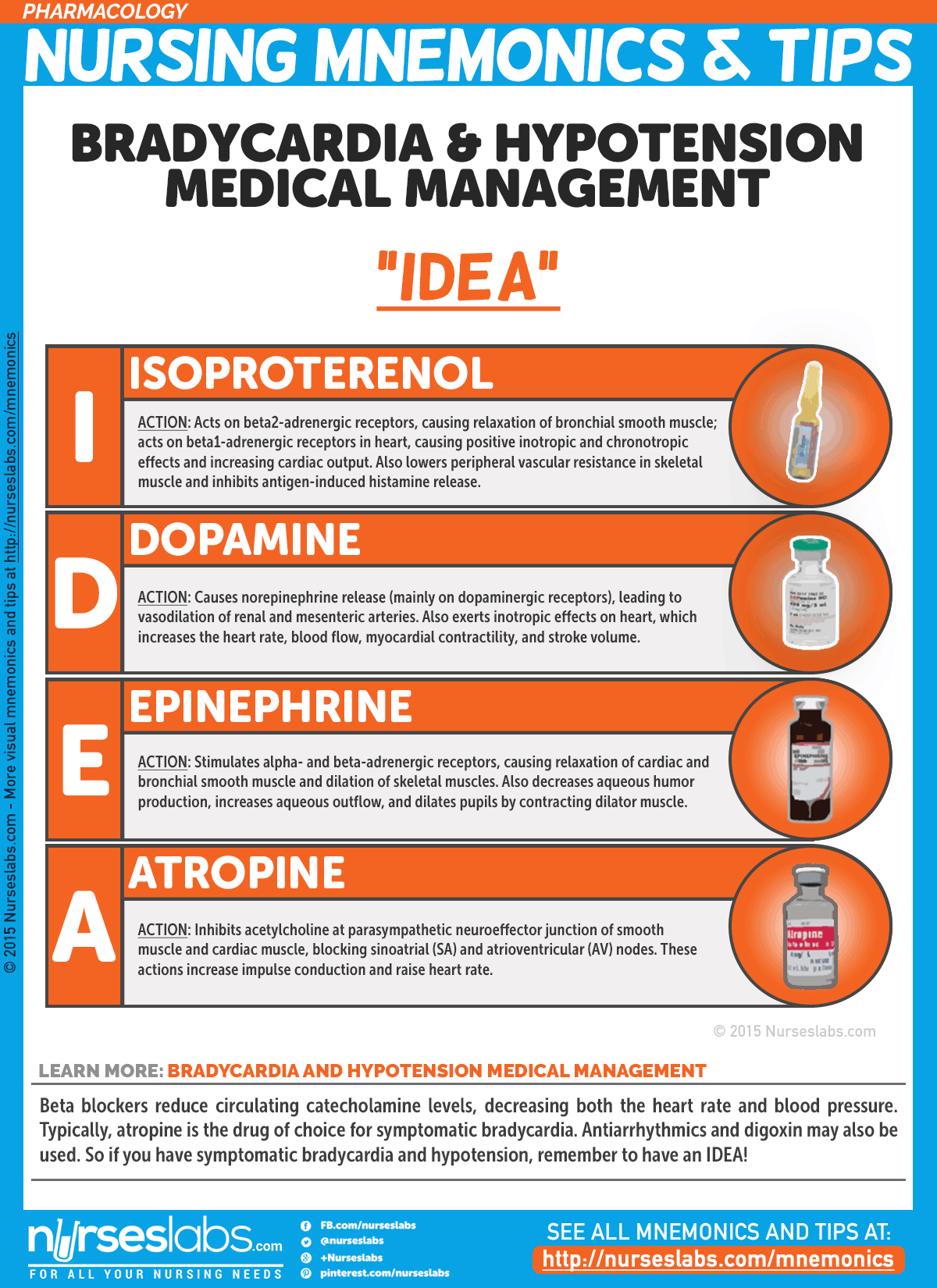
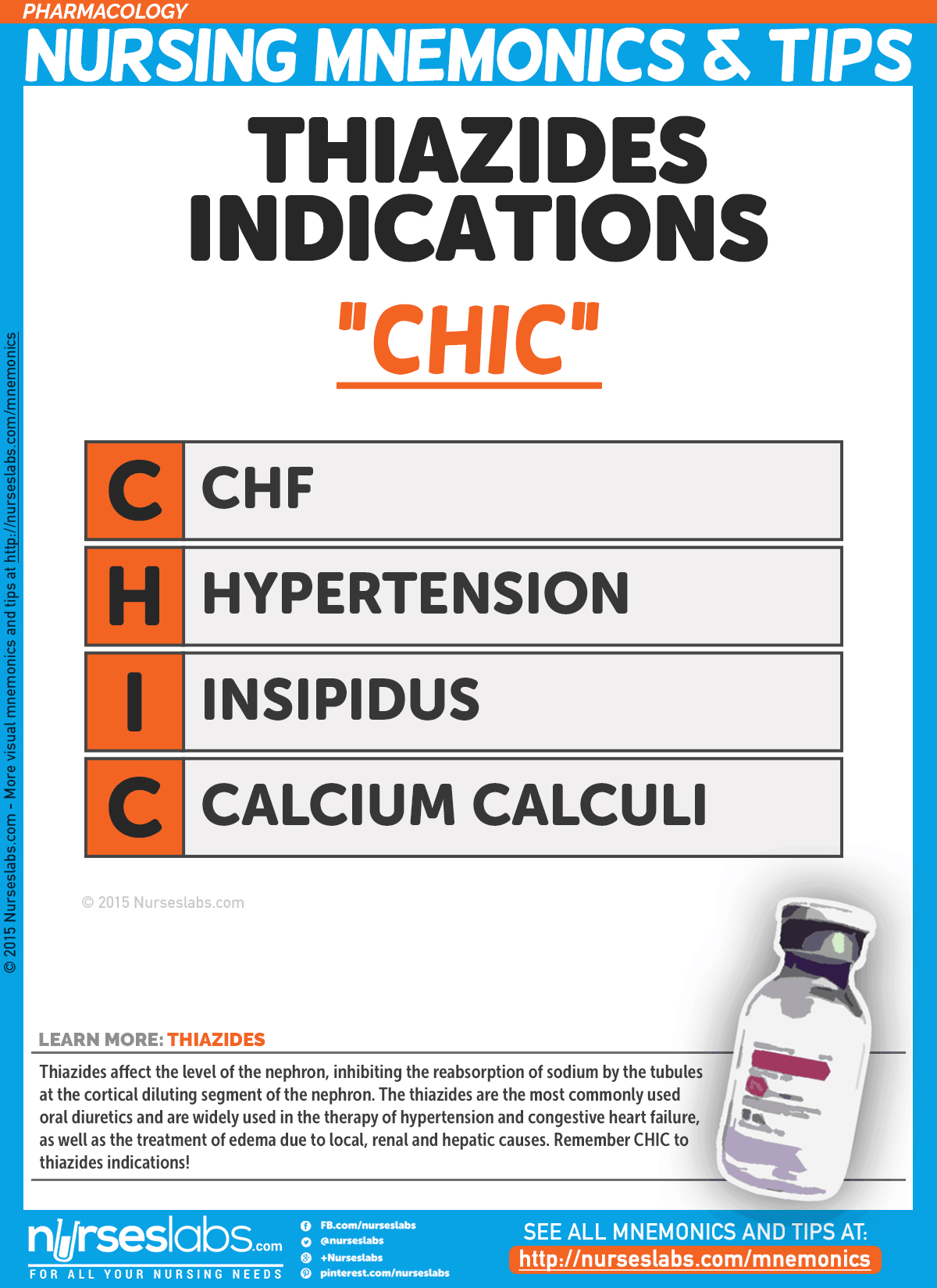
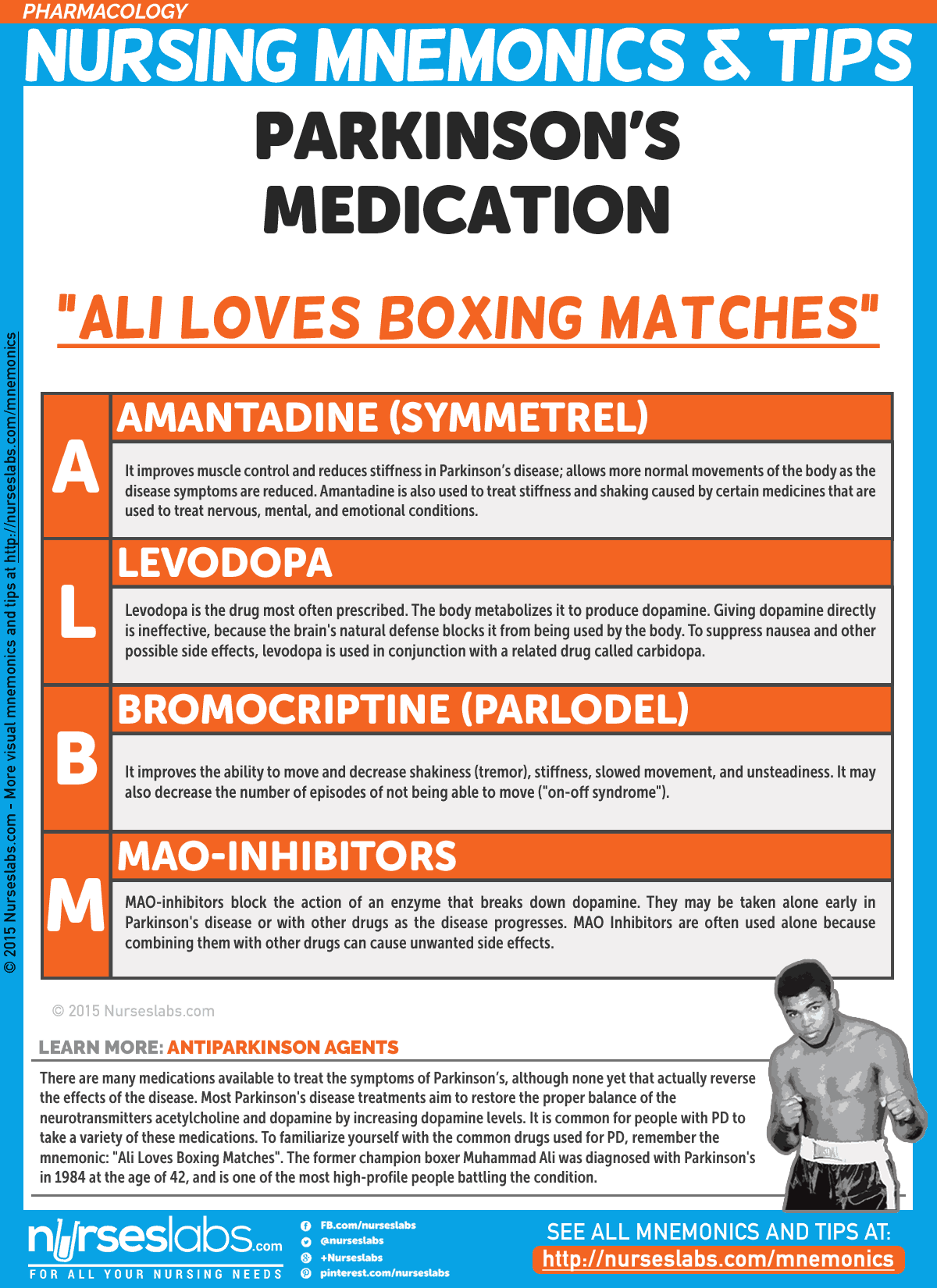
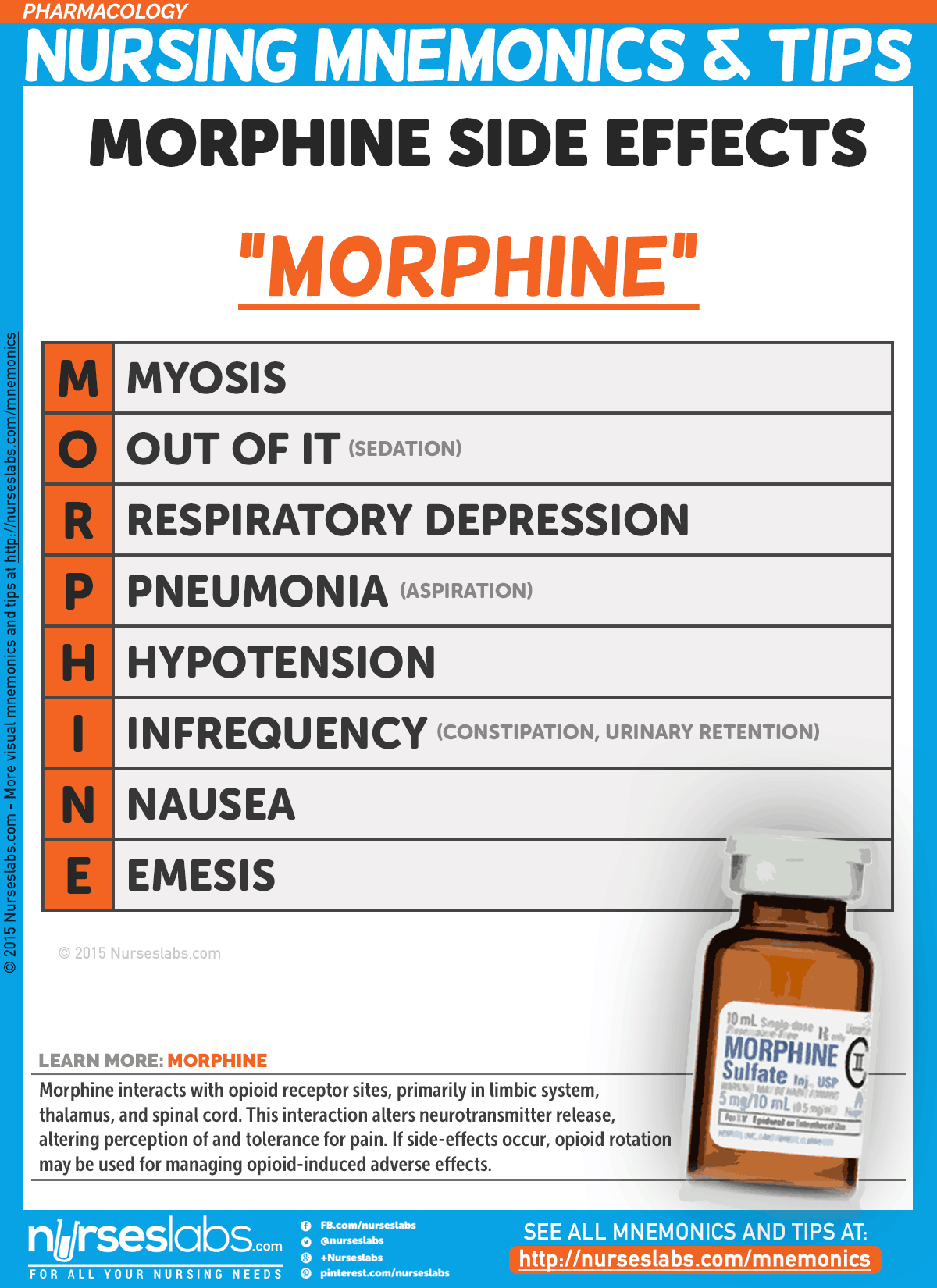
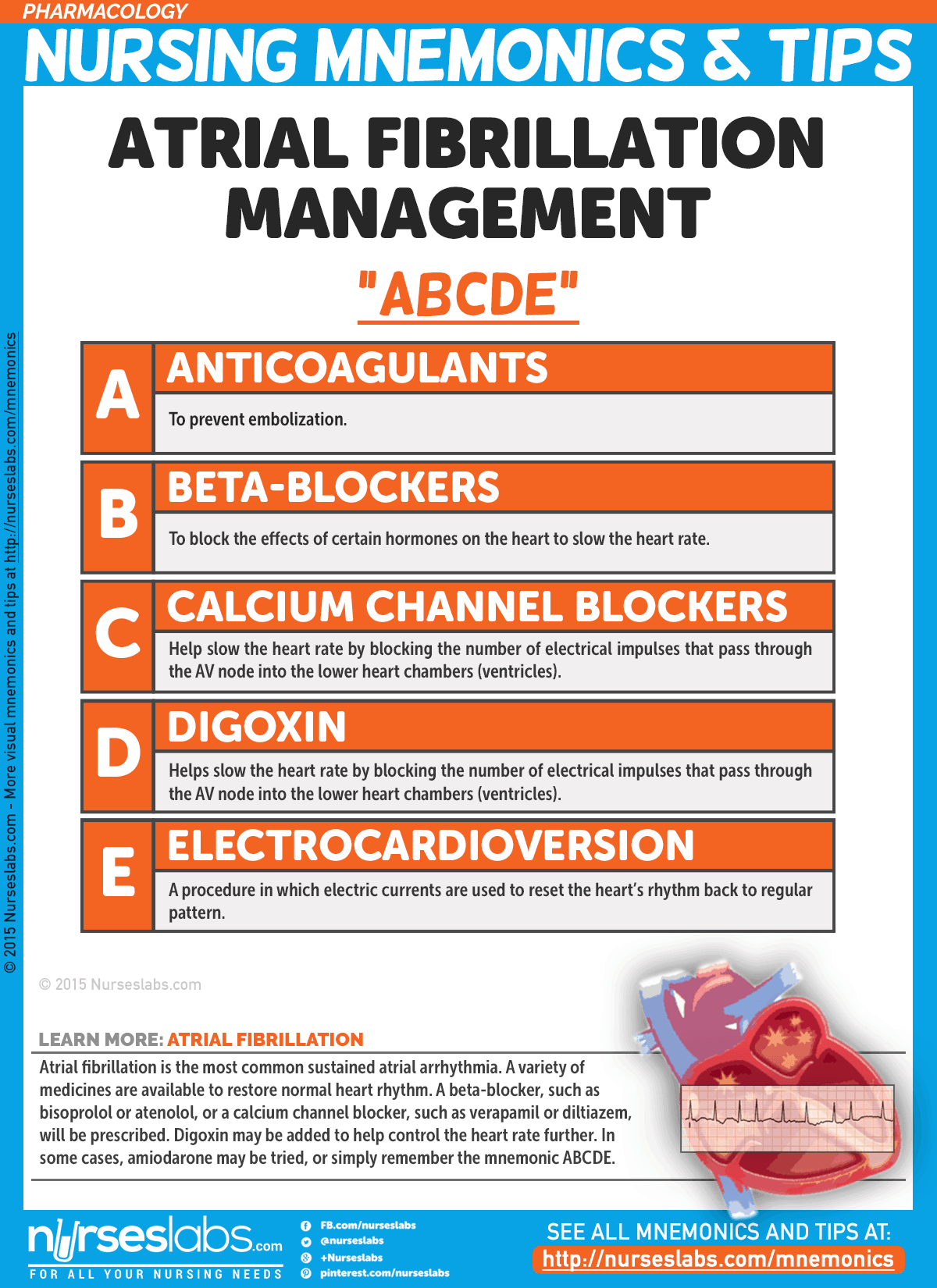
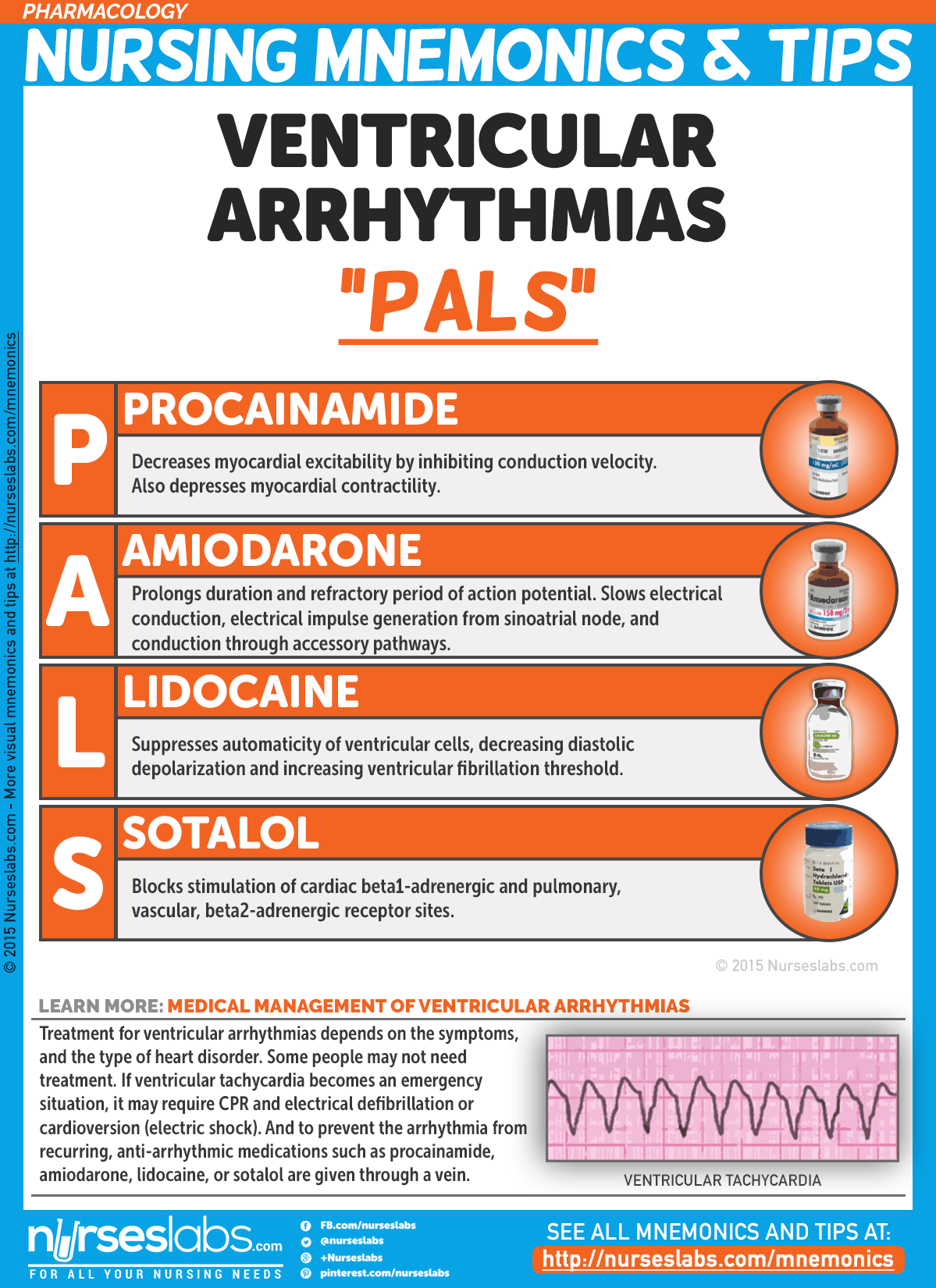
augusta registered nurse since 2018. this was rather helpful.
Nys
Thanks… it really helpful
Can I get a print copy of all the care plans
Can I pls get a print out copy of pharmacology
Hello! You can print the webpage itself.
Thank you so much!
Myosis means pin point pupils.
I’m a pharmacy student and I like to read up on tips for nursing students since the tricks are very defined. Helping me a lot with my studies. Thank you :)
This is really helpful.love reading this. Thanks a ton.
I really need this article
a very helpful topic
Thank you very much! this is really helpful.
Thank you! Thank you! Thank you! Good information that is free!!!
Glad to be of help, Ginnette!
Love this! In my 3rd semester of nursing school and this will be helpful for testing next week!!
Hello,
Is it possible to list or point put the most commonly medication tested in the NCLEX RN?
Thank you for all your help!
Check out our nursing pharmacology section.
Very helpful to exams
Hi Gwa, I’m delighted to hear that the article was beneficial for your exam preparations! Remember, always take your time to understand each concept thoroughly. If there’s anything else you’d like to know or any topics you want covered in the future, just let me know. Wishing you the best in your exams!
THANK YOU FOR THIS. THIS IS VERY HELPFUL FOR ME AS A NURSING STUDENTS. THANK YOUU SO MUCH!!!
Hi Zejna, You’re totally welcome! I’m super pumped to hear that you’re finding the pharmacology mnemonics useful. Mnemonics are such a powerful tool for memory retention. Just out of curiosity, which mnemonic did you find the most helpful? Or is there a particular drug class or body system you’d like to see mnemonics for in the future?
Beautiful. Very helpul thank you so much
Hi Ucheoma, You’re very welcome! I’m thrilled you found the pharmacology mnemonics and tips helpful. If there’s anything else you’re curious about or need a hand with, don’t hesitate to ask. Always here to help make your study process smoother and more enjoyable!